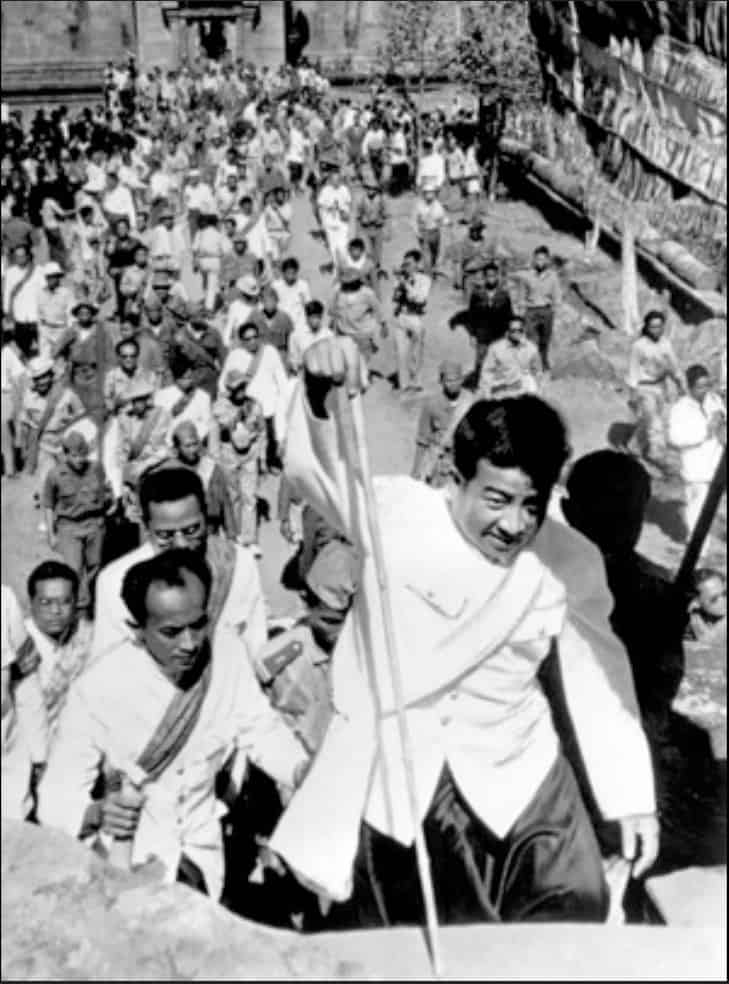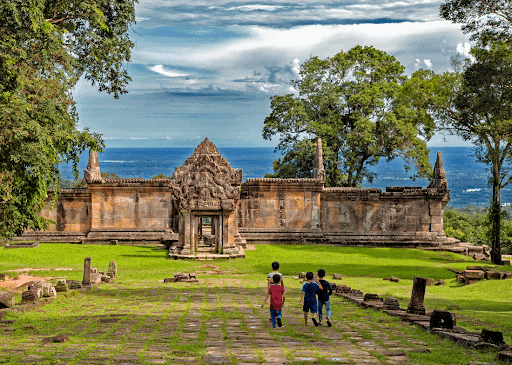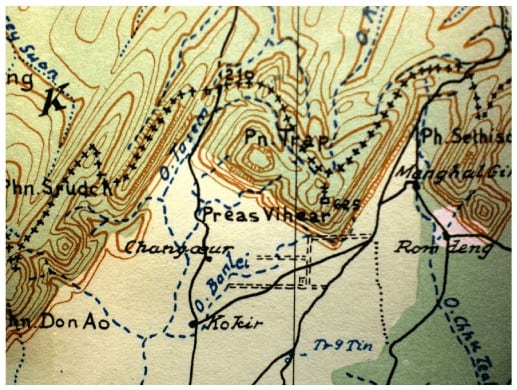Foreign Service Officer Thomas Donohue served in both continental and archipelagic Southeast Asia during a tumultuous period in which countries in the region and other parts of the globe were breaking away from European colonial powers. He witnessed first-hand the complex relations among regional countries.
During his assignment in Cambodia from 1962 to 1964, both Cambodia and Thailand laid claim to the centuries-old Preah Vihear Temple. Although constructed by the Khmer Empire, the temple is located within the Dângrêk Range, a natural land border between Cambodia and Thailand. The geographical location, along with its recognized beauty and mysticism, led to a territorial dispute between the two countries for the ownership of the temple site. Donahue was the duty officer when Embassy Phnom Penh got the news that the International Court of Justice ultimately proclaimed that the Preah Vihear Temple was rightfully in Cambodian territory.
Donahue regularly expressed advocacy for the aspirations of autonomy of multiple countries in the area. He spent the majority of the 1950s back and forth from Sukarno-led Indonesia, which was going through a transition period after being a Dutch colony for over two centuries. In addition, Donohue later served in Cambodia, Malaysia, and Vietnam before finally joining the U.S. Department of Commerce as a consultant in 1976.
Thomas Donohue’s interview was conducted by Charles Stuart Kennedy on July 15, 2008
Read Thomas Donohue’s full story HERE.
Drafted by Kelvin Terrell
Background on the Preah Vihear Temple Dispute

One could find a handful of similarities between Cambodia and Thailand, but this pair of Southeast Asian countries, which are both descendants of ancient Indochinese kingdoms, have been in an informal rivalry for over half a millennium. Relations between the two countries date as far back as the 13th century between the Thai Ayutthaya Kingdom and their gradual displacing of the declining Khmer Empire throughout the 14th century. There have been various disputes in regards to the territory between the two countries. One such dispute, the Siamese-Cambodian War (1591-1594), was instigated by the Ayutthaya Kingdom and their invasion of the Kingdom of Cambodia. This development, however, only ensued due to previous Cambodian raids into Ayutthaya territory.
Vietnam, Cambodia’s eastern neighbor, also had a heavy influence in the Indochinese peninsula. There were large amounts of Vietnamese Nationals in the Cambodian capital of Phnom Penh that usually took specialized jobs in the country. This, along with the predominantly Vietnamese Catholic Cathedral located in the middle of the capital, further facilitated their influence in Cambodia.
More recent territorial disputes between the two countries were either facilitated or deterred by the French (depending on perspective) when the then Cambodian King Norodom allowed France to make Cambodia a protectorate in 1863. This was welcomed by the king, as it kept Cambodia from being absorbed by the larger countries of Vietnam and Siam. Of these territorial disputes, the one that revolves around the geographical ownership of the Preah Vihear Temple is one of the most recent in the area.
The Preah Vihear Temple was built around 900 years ago during the reign of Khmer king Suryavarman II (1113-1150). This was the same period that the world-famous Cambodian temple, Angkor Wat, was constructed. Preah Vihear, along with many other temples constructed at the time, was originally Hindu-based; however, many of them were converted into Buddhist temples due to the decline of Hinduism in the region. This decline was further facilitated by the ascension of Buddhist kings to the throne, such as Jayavarman VII (1181-1218), who is usually credited as being the most powerful of the Khmer rulers.
During Thomas Donohue’s assignment in Cambodia, both Cambodia and Thailand laid claim to the centuries-old Preah Vihear Temple. Cambodia complained to the International Court of Justice (ICJ) about Thailand and their armed occupation of the area surrounding the ancient temple, and wanted the Court to force the Thai to withdraw their forces from the area. The Court acknowledged that there had been a Franco-Siamese Treaty created in 1904, which included a map that detailed the borders of the two countries based on a watershed line. Following this statement, Thailand stated that they had never accepted the map; however, the Court concluded that Thailand did indeed accept the map. This ultimately led to the Court’s proclamation that the Preah Vihear Temple was rightfully in Cambodian territory.
Due to the shared effort of Cambodia and Thailand throughout the application process, the World Heritage Committee decided to add the Preah Vihear Temple to the World Heritage Site list on July 8, 2008.
Excerpts:
“[T]he influence was very, very strong. There was just no question. [The Cambodians] hated them.”
Neighborly Influences
Q: How did Vietnam play in Cambodia at that time [‘60-’64]?
Vietnam was always a dominant influence; all the artisans, all electricians, all the skilled workers were Vietnamese…The Cambodians hated—the Catholic church [that] had been there forever and they had built this beautiful cathedral right smack dab in the middle of Phnom Penh, and you could get all the Cambodian Catholics into this room. They were all Vietnamese. So then the influence was very, very strong. There was just no question. [The Cambodians] hated them.
Q: …[W]ell, that whole area was a difficult place and particularly having the Thais and the Vietnamese on each side, and these are two quite aggressive states.
“[T]he World Court had decided that by God, it was Cambodian.”
Cultural Heritage Security
DONOHUE: They pray every year at this great temple which is–
Q: Between the Thais and Cambodians.
DONOHUE: Well it is, but the thing is they have been fighting over it for a long time…[I]t really isn’t a Buddhist temple anyway; it’s a Hindu temple that’s been converted. I was the duty officer one night in Phnom Penh, and a cable came in about 10 o’clock, and the World Court had decided that by God, it was Cambodian. So the ambassador wasn’t there, and with great glee, the Chargé got energized by this. It was Christmas; they shut down for three days. Oh, it was a magnificent thing.
TABLE OF CONTENTS HIGHLIGHTS
Education
BA in English, Columbia University 1946–1950
MA in English, Columbia University 1950-1952
Entered the Foreign Service (1954)
Jakarta, Indonesia—Political Officer 1954–1961
Phnom Penh, Cambodia—Political Officer 1962–1964
Saigon, Vietnam—Political Officer 1965–1966


